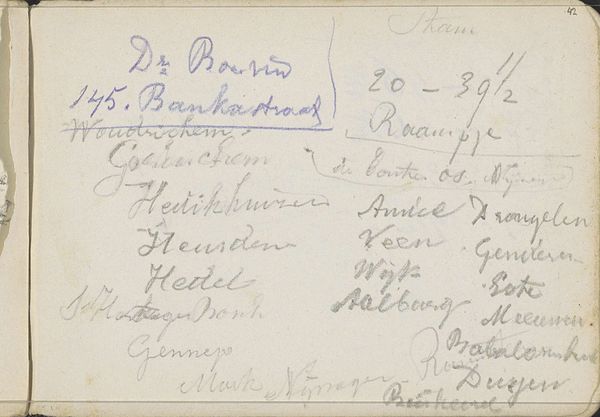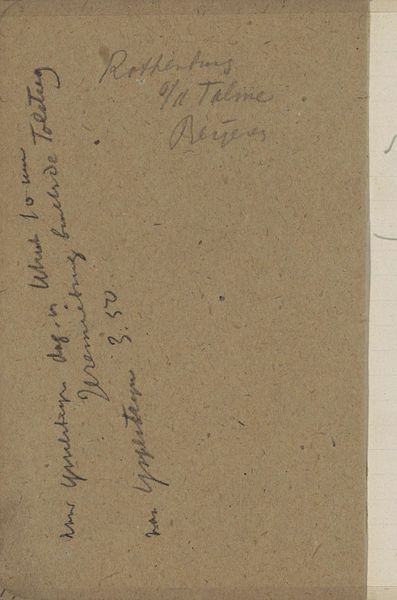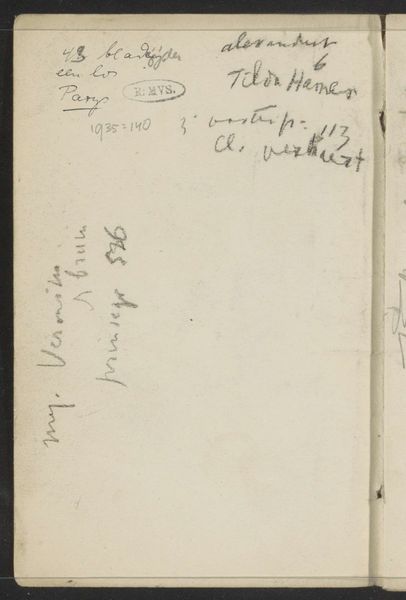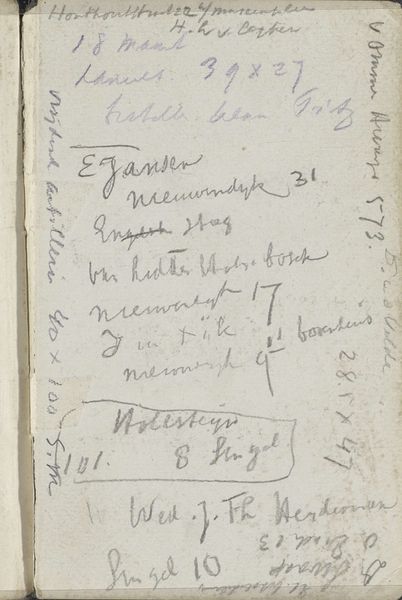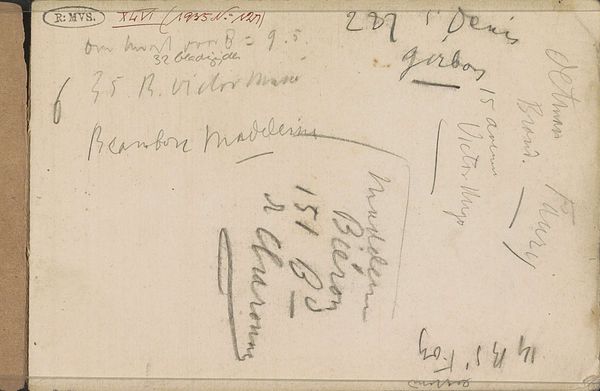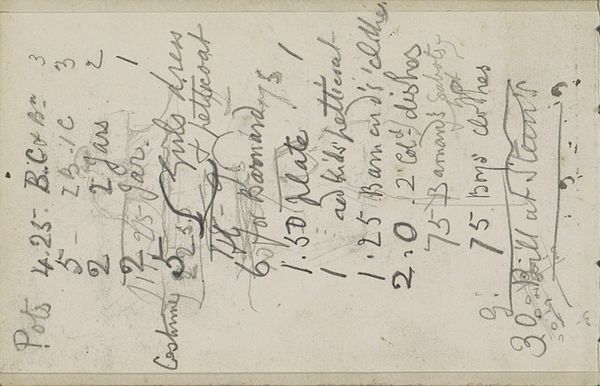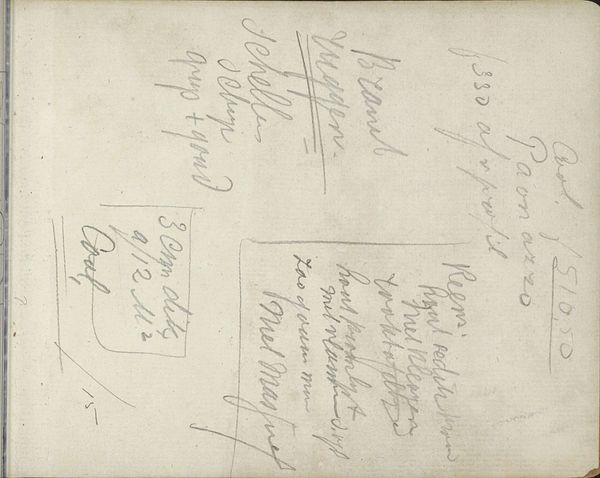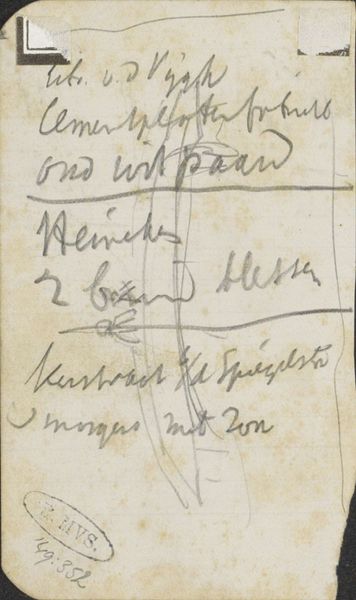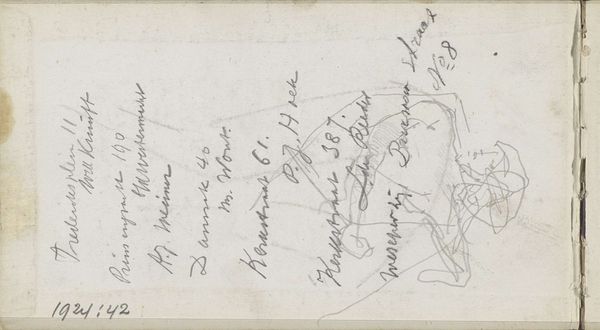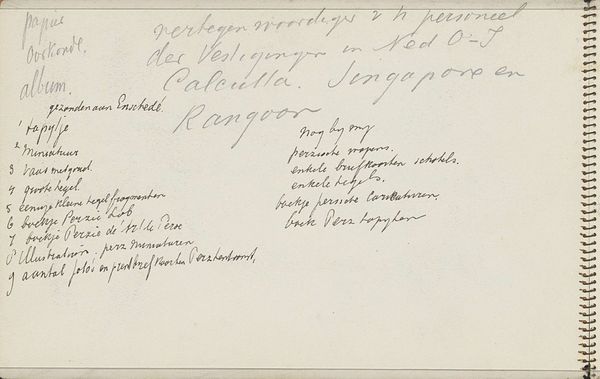
drawing, paper, pencil, graphite, pastel
#
portrait
#
drawing
#
aged paper
#
hand written
#
hand-lettering
#
hand drawn type
#
hand lettering
#
paper
#
personal sketchbook
#
hand-written
#
hand-drawn typeface
#
fading type
#
pencil
#
graphite
#
pastel
#
calligraphy
#
small lettering
Copyright: Rijks Museum: Open Domain
Editor: So, this is "Annotaties" from 1880, made with pencil, graphite, and pastel on paper by Louis Apol. It reminds me of a page torn from a historical sketchbook – almost like a peek into someone’s private thoughts. What catches your eye about this piece? Curator: It immediately brings to mind the tradition of travel and exploration so prominent in the 19th century, particularly the romanticization of the ‘explorer’ figure. We see fragments of what seem to be notes – perhaps names like “Livingstone” or geographical references – suggestive of the period's colonial pursuits and scientific expeditions. Apol, though known for his winter landscapes, places himself, through this "sketchbook" in this cultural milieu. It's interesting to consider who he imagines as the viewer of these 'annotations'. Does this make you consider how we use and view sketchbooks today? Editor: That's fascinating, I didn't initially make the connection to exploration. The act of handwriting, the seeming randomness – it feels quite personal, almost resisting public consumption. Curator: Indeed. Consider how such a piece might have been viewed at the time. The "hand-written" quality suggests authenticity, a direct link to experience, yet presented as a composed "artwork." Is it genuine private musings or a performance of intimacy intended for an audience aware of exploration narratives? That tension speaks volumes about the evolving public role of art in that period. Editor: I hadn’t thought about the performance aspect before. I was focused on the intimate nature, but it makes sense that Apol, as an artist, was always aware of an audience, shaping even his private "annotations." Curator: Precisely! Reflecting on it, perhaps Apol intended to provoke thought about the ethics and social impact of the colonial era. Editor: That really makes you think about how artists use personal narratives to comment on broader socio-political contexts. Thanks! Curator: And for me, you helped bring a fresh perspective on how audiences engage differently with art across time. A pleasure.
Comments
No comments
Be the first to comment and join the conversation on the ultimate creative platform.

